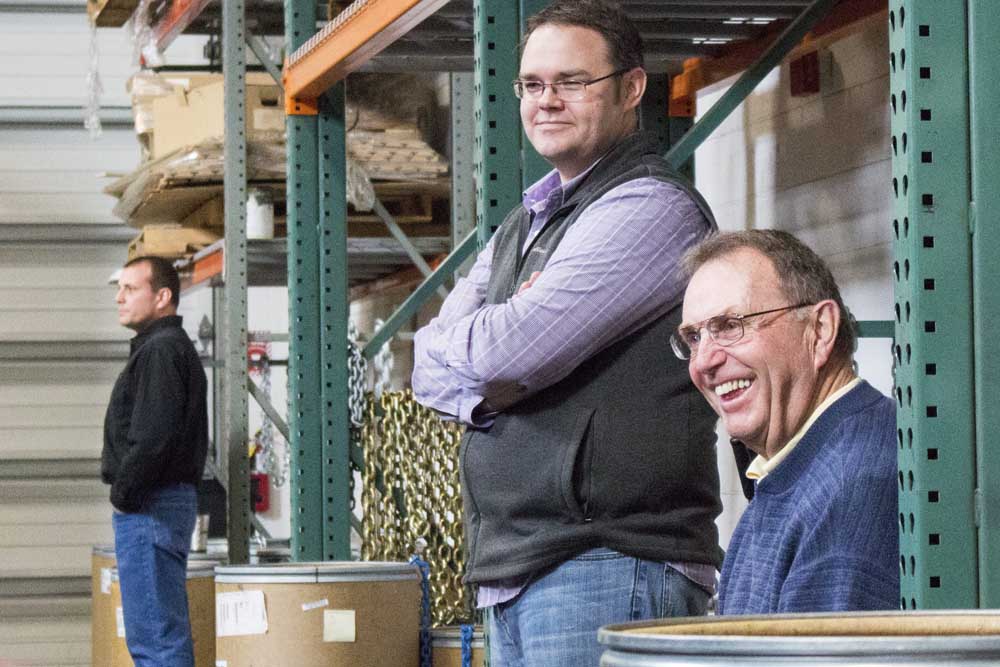Astoria should tell its story for marketing
Published 4:00 pm Wednesday, February 20, 2013
If Astorians arent telling their stories, then someone else might.
Trending
During her presentation Wednesday night on civic identity to a crowd of 65 to 70 mostly Astoria Downtown Historic District Association?regulars at the Columbia River Maritime Museum, Michele Reeves, an urban strategist with Civilis Consultants of Portland, asked the gathered business owners, civic leaders and interested citizens what story they want their city to tell.
I use story because 24 hours a day, seven days a week, places are telling stories whether they like it or not, said Reeves, adding that Astorians want to be telling their own story, rather than outsiders.
Reeves project, Building Blocks for a Successful Downtown, included an introductory session last spring at the Bankers Suite and a later meeting in early winter on the physical make-up of the city. This, a marketing and public relations workshop, was Reeves last before giving her final findings and recommendations at 5:30 p.m. April 4 at Clatsop Community Colleges Performing Arts Center.
Trending
The project was funded by the downtown association, city of Astoria, Pacific Power, Astoria Sunday Market and the Oregon Main Street project, which ADHDA?is a part of.
Marketing is not bragging, she said, then proclaimed herself the best public speaker in the state of Oregon, momentarily subduing the audiences mood to warn people about the negative reactions to showboating. This is a very important rule.
Creating stories inclusive of local, regional and national audiences; projecting an authentic image of the areas identity; and creating tension and conflict to excite the reader are the keys to marketing the story of a city, said Reeves. Astoria, she added, is doing a good job at the regional level, but needs to work better on local marketing.
Taglines
We dont care if its true, said Reeves. We care if its effective,
She pointed to a few city mottos she thought were ineffective:
Near Nature. Near Perfect evokes Spokanes outdoor connection but cant quite figure out who its targeting;
Corvallis, Americas Most Innovative City, is somewhat accurate after New Mexico pointed to Corvallis as the top city in the country for innovation per capita, but it still comes off as pretentious; and
Portland, the City that Works, only becomes visible when something doesnt.
Two other examples, Reeves thought, focused more on the fundamentals of good marketing:
Dont Mess with Texas successfully targeted a young, male audience proven to disproportionately litter the Lone Star States highways, brought attention to the $2,000 fines Texas authorities started dolling out to litterbugs, became an authentic motto evoking the fierce pride of Texans and resulted in significantly decreased littering rates; and
What Happens in Las Vegas, Stays in Las Vegas brought Sin City back to its roots as an adult entertainment Mecca after failed attempts in the 1980s to become a family destination.
A story for a city
You need to curate your downtown for people, said Reeves. Curate things for them to do.
Characterizing downtown in the right way through its physical presentation; stating the objective of the city; creating relationships between the visitors and locals; and trumpeting the positive aspects of the environment are the most important aspects of creating a story for visitors, said Reeves.
Fourth Plain Boulevard, an east-west arterial in Vancouver, Wash., tells people to go 45 miles per hour, said Reeves, even if the speed limit is only 30. U.S. Highway 30 in Uniontown has the same effect and, along with other parts of Astoria, needs to be physically characterized in a more inviting fashion possibly with only three lanes, Reeves said about talks with the city.
The places where residents were more connected to their cities also saw more local GDP growth, said a project by the Knight Foundation and Gallup called Soul of the Community (www.soulofthecommunity.org) about the power of connection. Reeves said Astoria needs to coopt Astorias authenticity to connect with tourists, sticking with the aura of a real working river town.
Spokane, Wash., needlessly thinks of itself as the red-headed stepchild of Seattle, said Reeves, when it should focus on its advantages, such as being close to every natural feature and outdoor activity imaginable. Astoria should similarly trumpet its local environment.
After her presentation, Reeves split the gathered masses into eight groups, each with a Sharpie, an oversized note pad on an easel and 16 questions about Astorias perceived identity. The maelstrom of answers included key words to describe Astorias present, past and future, comparisons to other cities, leading and most beloved businesses and other aspirations for downtown. The answers will be coalesced by Reeves and taken into account in her ultimate findings.
Astoria Community Development Director Brett Estes announced a city meeting will be held at 6 p.m. March 5 at the Astoria Public Library concerning the citys parking pass program and how it fits into the larger context of parking in downtown. After being pressed by a resident wanting a more general discussion on parking issues at the meeting, Estes said anyone with concerns about parking is invited to share their opinions.









